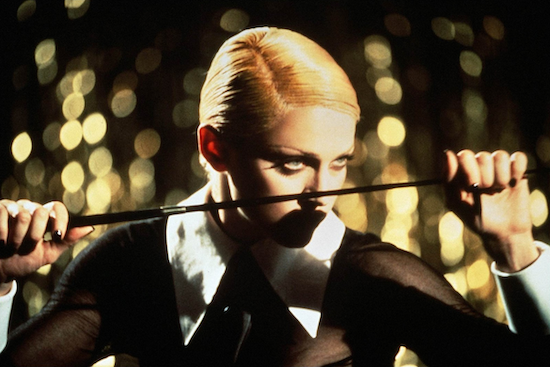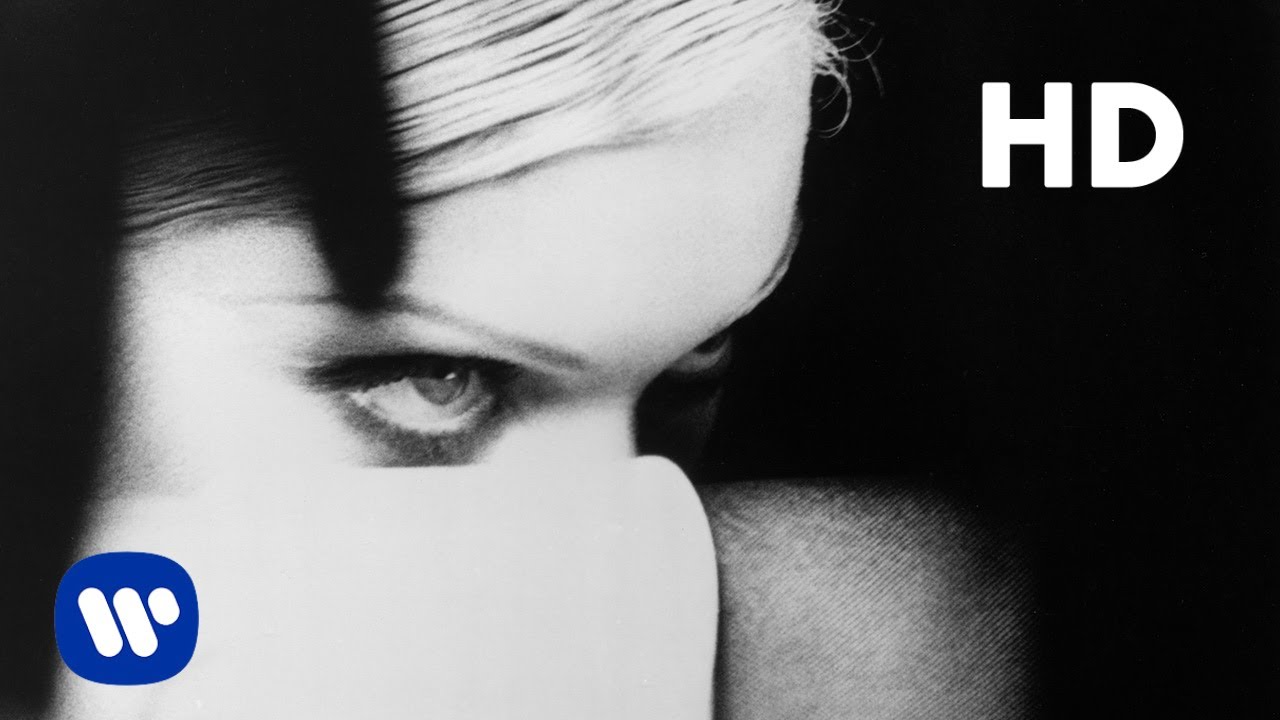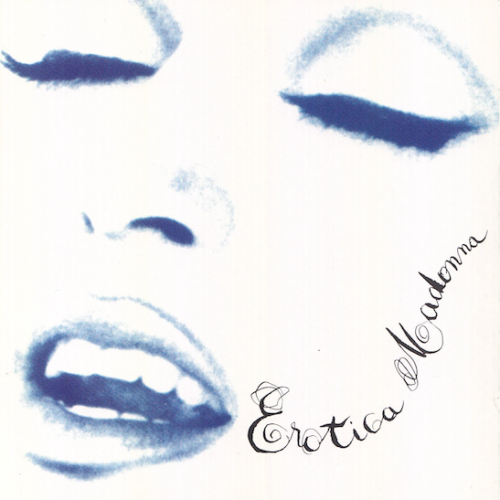Two weeks ago, Madonna celebrated 40 years since the release of her debut single ‘Everybody.’ A slight and slinky slice of early 80s dance-pop, it wasn’t a particularly auspicious start for someone who would go on to have the most legendary career in pop music. “Everybody, come on, dance and sing / everybody, get up and do your thing,” runs the refrain, an exercise in pure simplicity that, for better or worse, Madonna has appeared to return to at points in latter-day albums.
The Madonna we know today is a chameleonic shapeshifter, a pop maverick who has ridden the waves of commercial fortune and failure and come out the other side, four decades on, as someone whose status as a cultural icon is long assured. There are those who may argue that it is still possible to tarnish a legacy, but such are Madonna’s cumulative artistic triumphs that the lasting effect of the high-quality pop music she has created remains unimpeachable. (And who could imagine saying that if you’d only heard ‘Everybody’?)
For me, though, it is 1992’s Erotica, her fifth LP and the first to arrive on her own Maverick imprint, that is the reason we are still talking about Madonna today. Erotica is the key in the Madonna discography that unlocks the entire conundrum of who she is as an artist. Without Erotica, there wouldn’t have been those later big-hitters like 1998’s Ray of Light or 2000’s Music, records which were billed as pop and trailed by a trove of hit singles but were really built on the same sort of restless experimentation she first flirted, nay, cavorted with on Erotica.
Without Erotica, we wouldn’t be talking about Madonna’s depth in pop in the same way, where she infused her radio-ready melodicism with R&B grooves, hip hop rhythms, and offbeat instrumentation.
And without Erotica, an era in her career that provoked her first big backlash and her first true decline in commercial favour, it’s possible that she wouldn’t have set herself up for the long-term career that has been a unique one in pop terms. It’s the pivotal point where Madonna shook off the mantle of ‘pop star’ and became ‘artist.’
Her imperial phase of the 1980s had been an upward trajectory in this vein, tracing through the Nile Rogers/bubblegum fusion of 1984’s Like A Virgin through the titanic pop immediacy of 1986’s True Blue and, most importantly, 1989’s Like A Prayer, which exhibited a level of maturity and songwriting grace that was the catalyst for the cohesive statements to follow. It wasn’t about making hits anymore, it was about making records.
Crowned by 1990’s transcending compilation The Immaculate Collection, Madonna ended this imperial phase on top of the world. She was coming off the box office-busting Blond Ambition Tour and had solidified her status as the biggest pop star on the planet. Even re-releases of previous singles – ‘Holiday’ and ‘Crazy for You’ – continued to threaten for the top spot.
The two new songs on The Immaculate Collection – ‘Justify My Love’ and ‘Rescue Me’ – hinted at the direction to follow. The former, a heady brew of dusky trip hop, eerie synths and spoken word, is surely one of the most unconventional songs to have become a chart-topping hit, while the latter is a pure hi-NRG early 90s house/gospel hybrid. Both are key to the Erotica sound, and Madonna enlisted collaborators from these songs – Andre Betts and Shep Pettibone, respectively – to form the backbone of her new album.
Erotica takes Like A Prayer’s ‘full-length piece of art’ modus operandi – the whole being the important thing – to the next level with supreme confidence. It’s an intoxicating cocktail of house, samples, jazz, trip-hop and, for a star like Madonna at this point, pretty resolutely uncommercial in comparison to the sort of song that propelled her to stratospheric levels of stardom in the mid-1980s.
‘Justify My Love’ had shown that a risk could pay off – the sound, even today, is modern – and Erotica is an early example of what became known as Madonna’s fabled “reinvention” technique, her ability to seek out the correct collaborators to help facilitate her vision.
For Erotica, the reunion with Pettibone (with whom she created ‘Vogue,’ a song that remains exhilarating to this day) and Betts proved fruitful. In broad terms, the Pettibone side of the record brings beats, dance sequencing, and 90s house, while the Betts material leans more towards the low-key with ambient textures and jazz accents. “They come from opposite ends of the spectrum in terms of their music style and approach to music,” Madonna told Billboard, “but they’re both connected to the street and they’re still young and hungry.”
Madonna’s serious subject matter governed the mood of the music, and she and Pettibone crafted demos from the autumn of 1991 at his New York City apartment. The initial results were unfavourable. “I hate them,” Madonna told Pettibone when he played them back to her. “If I had wanted the album to sound like that, I’d have worked with Patrick Leonard in L.A.”
As Pettibone recounted in his fascinating Erotica Diaries: “I got the point pretty fast. Madonna wanted Erotica to have a raw edge to it, as if it were recorded in an alley at 123rd Street in Harlem. She didn’t want some light glossy production to permeate her sound.”
That raw edge is part of what makes Erotica such a unique listen; it’s melodic yet hard, tender yet chilly, modern yet of its time, and wonderfully contrasts its icy digital sheen with vinyl crackles and the deep bass of analogue. It’s an album that wants to bring you in but doesn’t want you to get too close. It’s a prickly prospect, and one that takes time to unfold.
Madonna was keen to experiment, whether by committing wholesale to the nasal vocals that were put direct to tape on the strange, almost cartoonish ‘Bye Bye Baby,’ or the way the original ‘Goodbye To Innocence’, a modish house banger, morphed into a bizarre, aloof rendering of the smoky standard ‘Fever.’ There is also the reggae-tinged ‘Why’s It So Hard,’ which originated following Pettibone’s vacation to Jamaica over Christmas 1991, the cool disco energy of ‘Deeper And Deeper’ (with its self-referential nod to ‘Vogue’), which Madonna insisted must include an (inspired) flamenco guitar breakdown, and the riveting, mostly spoken ‘Waiting,’ where the arrangement shifts between gritty sparseness and elegant lushness. The same can be said of the luscious closer ‘Secret Garden,’ all smoky bass and piano, and one of her most unusual, satisfying songs.
The lovely ‘Where Life Begins’ gently but firmly extols the virtues of cunnilingus to a soft backbeat, in a way that was entirely lost on nine-year-old me. I remember listening to the album on headphones on a family car trip to the Cotswolds; as we journeyed through the beautiful Gloucestershire countryside with my septuagenarian great-aunt beside me, there was Madonna talking in my ear about going down where it’s warm inside and breathing a sigh of relief that her pal brought his raincoat – not exactly the cosy sort of hygge I imagined, looking back. Erotica was, for many listeners, their first taste of something sexy, something illicit in music form. I remember my dad getting a wry chuckle from the cashier in Our Price buying it for me one summer. Madonna’s pop transcendence meant that she opened these kinds of doors for listeners.

Erotica was trailed by the thrilling title track in September 1992, a song that, three decades on, remains an exciting listen. Has there ever been a more inspired choice of Kool And The Gang sample? Where the horns of the original ‘Jungle Boogie’ are buoyant and exuberant, when placed into the drum & bass melee of ‘Erotica’ they sound discordant, unnerving, frightening. It’s a dark and dangerous world that Madonna is taking us into.
But it wasn’t simple. ‘Erotica’ underwent several different guises – as Pettibone told Billboard in 2017: “‘Erotica’ was four different songs throughout the process. [Madonna] loved the groove. She would sing it one way, background vocals harmonies and all, then decide to erase everything and start over again. Every version was very good. Shame she made me erase stuff.”
Collaborator Tony Shimkin remembered: “The original version of ‘Erotica’ wasn’t as slinky and sexy and grimy and dirty sounding until we were in the mixing process of the record, [which was] more toward the final stages. It was experimentation. When we realized it was going to be the first single and started working on the remix, it took on a different, darker vibe. That’s when the character emerged, this Dita, when she ad-libbed the speaking parts. Then the character became something that took over.”
Pettibone, aware that Madonna was crafting a 1930s dominatrix look for Erotica and had been working on a mysterious accompanying book, encouraged her to use some of that material for the song. As he recounted in the Erotica Diaries, “the chorus and bridge were changed entirely and the whole psyche of the song became sexier, more to the point. It seemed as if Dita brought out the best in her, actually serving as a vehicle for the dangerous territory she was travelling.”
The accompanying book, of course, was Sex, which has become entwined with the Erotica story – largely for the worse, I would say. Conceived as a coffee table programme of soft porn, Sex was ostensibly inspired by the photography of Guy Bourdin and Robert Mapplethorpe and was met with a mixture of derision, disgust, and delight. Madonna experienced a severe backlash at the time for what was perceived to be ‘going too far,’ and negative publicity surrounding the book overshadowed what was, at its core, an album of artistic sophistication and merit. Madonna later admitted that her biggest career disappointment was “the fact that my Erotica album was overlooked because of the whole thing with the Sex book. It just got lost in all that. I think there’s some brilliant songs on it and people didn’t give it a chance."
Reviews of Erotica at the time were not unkind – Arion Berger in a somewhat back-handed Rolling Stone review wrote that it “is everything Madonna has been denounced for being — meticulous, calculated, domineering and artificial. It accepts those charges and answers with a brilliant record to prove them.” One of the most insightful comments was from J.D. Considine in The Baltimore Sun, who acknowledged that the songs find Madonna singing less about sex, but about love.
Indeed, Erotica is home to some of the most gorgeous ballads of Madonna’s career – listen to the yearning vocal on the pleading ‘Bad Girl,’ or the lovely elegance of ‘Rain,’ or the plaintive emotion of ‘In This Life,’ a tribute to friends who had died from AIDS. Musician Rod Thomas, aka Bright Light Bright Light, calls Erotica “Madonna’s most consistent album start to finish” and describes how Madonna referenced “both sonically and lyrically underground LGBTQ culture… especially ‘In This Life,’ which she included in [1993’s The Girlie Show], bringing the staggering loss from AIDS and the lack of humanity around HIV to the mainstream. Whatever you may think of her, this album is delicious and spectacular in so many ways, especially when you consider that – in today’s eyes – the most controversial thing she did on the record was to care about other human life.”

Sex
As much as the edgy, raw sound is what Erotica’s reputation may be built on, it’s an album of more depth and complexity than one may give it credit for. It’s that classic come in-but-not-too-close again. It’s an album where the suggestive can sit comfortably alongside the romantic, where the vitriolic rubs along with the vulnerable. It’s the scope of human emotions, in other words.
Never before had an artist articulated the axis of sexuality and love with such humour (“Colonel Sanders said it best” anyone?), spirit, and wry intelligence; it surely must be the fact that Madonna was a woman that caused such a heated counterattack in the wake of Sex and Erotica ¬¬– did Prince, for example, face quite the same criticism?
Largely because of Sex (whose photography work is, actually, pretty good), Erotica suffered a sad fate that doesn’t do its boldness and uniqueness justice. There is a cohesion of vision from beginning to end – it was, and still is, dark and exciting, subversive and sophisticated. And that’s not to talk about its cultural impact. If Madonna broke down doors in the 1980s, she was breaking down houses with Erotica – it simply changed the way mainstream pop artists could approach record-making at the height of their commercial powers and gave artists a pass to explore areas of their sexuality, areas of their lives that, until then, had been off limits on record and radio. Erotica is the intersection of love, sex, and death, a chilly dance missile, icy beneath the glare of AIDS. Madonna took the flack so you don’t have to.
In a later Billboard piece, Joe Lynch wrote that the album "occupies a watershed place in the pop pantheon, setting the blueprint for singers to get raw while eschewing exploitation for decades to come.” And that’s the crux of Erotica – an album that is a cultural landmark, yes, and I wager the fulcrum on which Madonna’s career pivots. It’s because of an album like this that we know Madonna the artist. That we know what Madonna is capable of, the way a Madonna record isn’t necessarily just about capturing the zeitgeist but can be about changing the whole conversation. And – at the very, very core of it – it’s just a bloody good record. Now sit back and press play and yes, that crackle is meant to be there…




